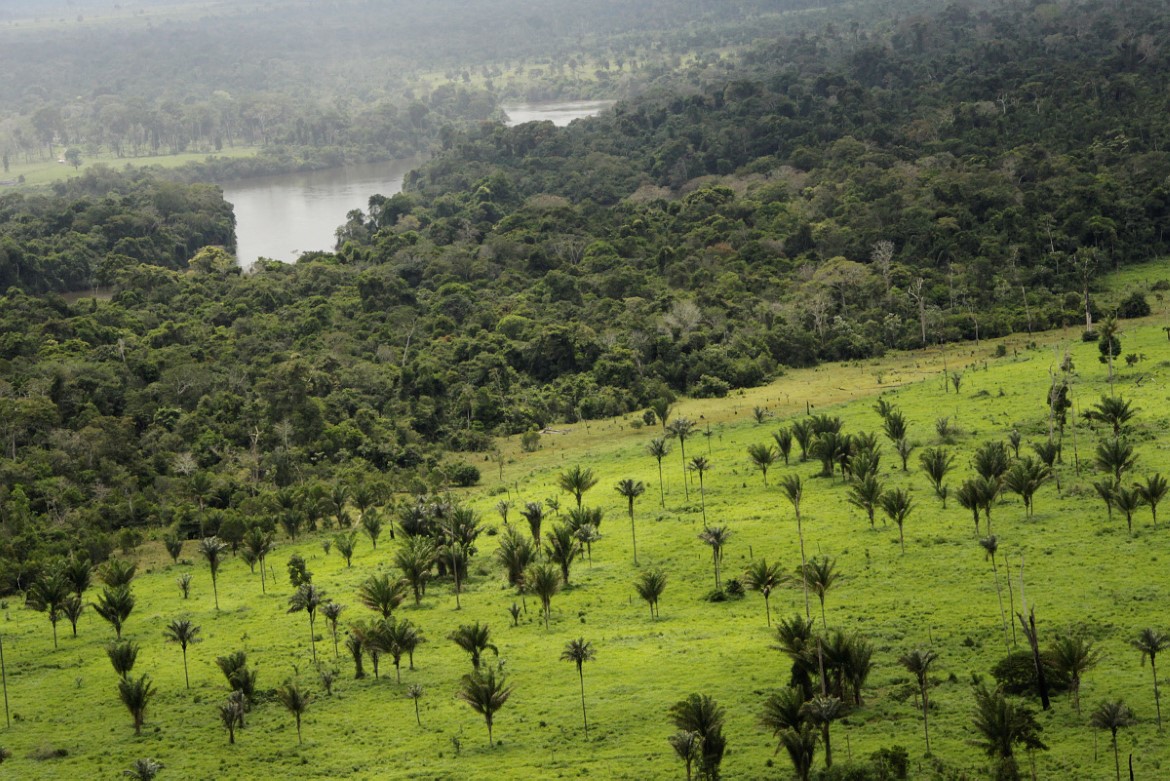
Support built for low-emission rural development
Organization
Earth Innovation Institute (EII)The purpose of the project was to align regional actors in five landscapes in Brazil, Mexico and Peru around a shared agenda for changing the rural development model from its business-as-usual to an alternative model of sustained low-emission rural development.
Why did Norway decide to support this project?
Norad considered the project as highly relevant for the objectives of the Norwegian International Climate and Forest Initiative (NICFI). The project was designed to provide evidence to various actors of environmental and economic benefits of low-emission rural development.
A strength was the project’s emphasis on strengthening civil society in supporting jurisdictional low-emission rural development. The project targeted some of the most progressive jurisdictions were REDD+ approaches were already underway, though needing push and support.
The expected outcomes of the project were
Outcome 1: Alliance of regional, independent civil society organizations focused on landscape-level low-emission rural development transitions established and operational
Outcome 2: Evidence-based regional assessments and strategies for low-emission rural development transition developed
Outcome 3: Landscape-wide and sector-specific action plans for the transition to low-emission rural development developed with multi-stakeholder support and implementation begun in 5 landscapes in Brazil (Mato Grosso, Acre, Pará), Mexico (Chiapas), and Peru (Pachitea watershed)
Outcome 4: Stronger, long-term local/regional governance and implementation capacity for LED-R transitions is developed in at least 5 target landscapes
Outcome 5: Experience with jurisdictional/regional low-emission rural development transition approaches systematized and shared with other regions to contribute to the replication and scaling up of the models to neighboring jurisdictions, at the national level, and/or international processes
Results
Overall, Norad assesses that the outcomes have been partially achieved. At output level, most products have been achieved, although with more time required for some processes than initially anticipated. EII has initiated and strengthened important multi-stakeholder processes to gain support for low-emission rural development strategies. Actual development and implementation of such strategies have varied between target jurisdictions.
Achievement of Outcome 1: EII successfully founded the Sustainable Tropics Alliance, along with four other organizations. The alliance consists of civil society organizations with a shared vision of a climate-focused model of rural development. Alliance members have in the project period been active in contributing to low emission rural development strategies in their respective regions and benefited from each other through exchange of knowledge and systematization of approaches. One challenge was to achieve sufficient funding to maintain and expand alliance members’ activities.
Achievement of Outcome 2: Results at output level were overall achieved, with assessments and draft sectoral strategies made for low-emission livestock, fisheries and forestry sectors. How these completed assessments and draft strategies influenced policy decisions, varied between target jurisdictions. In Peru, the Peruvian Amazon states agreed to collaborate to pursue low-emission economic development through a “Production-Protection-Pact.” In Mato Grosso in Brazil, EII developed a new business model for early movers within the soy supply chain, which is an important contribution to the state’s “Produce, Conserve, Include” strategy. In Acre state in Brazil and Chiapas in Mexico, the results at the end of the project were more at output/process level.
Achievement of Outcome 3: In all target regions, multi-stakeholder dialogue processes were initiated or improved, although none had fully integrated all relevant target groups and sectors by the end of the project period. Acre state in Brazil had come closest to a fully integrated multi-stakeholder process, although better integration of indigenous peoples and private sector was still needed. Sectoral low-emission development plans were developed, and in some cases beginning implementation. Fully integrated jurisdiction or landscape-wide strategies (integrating the sectoral plans) were in most cases not achieved, although progress was made. In the Peruvian Amazon (Pachitea watershed), one NGO partner, Instituto del Bien Común (IBC), contributed to 22 formal agreements between local governments, farmers and IBC to assure protection of 391 ha of forest, and close to 3500 ha of land set aside for conservation.
Achievement of Outcome 4: A number of outputs were completed related to capacity building of government actors, private businesses and local farmers and fishermen. Some examples are given on effect of such capacity building efforts. For instance, innovation exchange visits facilitated by EII for state governments of Acre and Peruvian Amazon resulted in a signed Memorandum of Understanding (MOU) between the two governments. In Mato Grosso region, EII signed an MOU with large agribusiness organizations in the state, indicating these private sector actors’ strengthened interest in working towards sustainable production. In the Lower Amazon in Pará, EII’s local partner Sapopema supported fishers’ organizations to advocate against a decision by the Ministry of Agriculture to suspend a four months closure of fisheries along with fisher unemployment insurance during the spawning season. A letter presented by leaders of regional fisher organizations and Sapopema may have influenced the court conclusion to overturn the decision by the Ministry of Agriculture.
Achievement of Outcome 5: The Sustainable Tropics Alliance systematically shared experiences between target regions among several actors. Such exchanges are evident by the systems built and similar processes facilitated in different regions. In Acre and Peruvian Amazon, exchanges between state governments continued after EII initially facilitated visits. However, government actors became advocates for integrated low-emissions development to a varied extent.
Lessons learned
EII highlights in the report both positive and challenging lessons learnt. Politically, the environmental agenda is competing with many other priorities for local/regional governments. According to EII, there is a great need for stronger multi-stakeholder dialogue processes to move the low-emission rural development agenda forward. Small-scale farmers, especially those without formal land titles, are often excluded from REDD+ processes. The time-scale required for multi-sectoral dialogues to result in fully integrated jurisdictional plans, was however longer than initially anticipated.
Disclaimer
The result descriptions are based on the information provided by the organisations. Their presentations and conclusions do not necessarily reflect the views of Norad. Norad has not verified all results reported.
